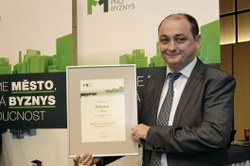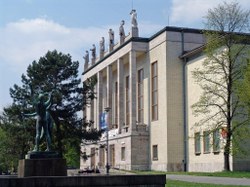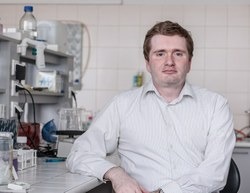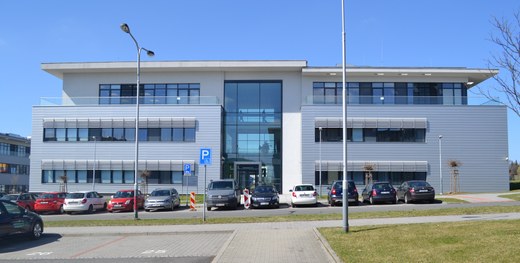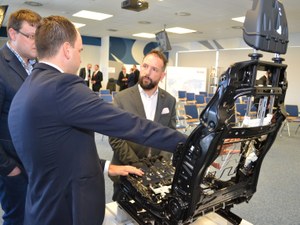April 2018
Brose CZ specializes in mechatronic systems for the automotive industry, supplying many of the world’s leading car brands. On Friday 6 April the company opened a brand-new IT services centre in Ostrava. The centre is located at the Moravian-Silesian Innovation Centre (MSIC) in Ostrava-Poruba, and it will provide IT support for Brose’s entire global operations. The new centre will create jobs for around 50 IT specialists – mainly IT infrastructure experts, software engineers and app developers, as well as systems support and user support specialists.
Ostrava is the Czech Republic’s no. 1 business city
This spring has brought several prestigious awards to Ostrava, recognizing the city’s increasingly strong profile as an investment destination. The most recent was Ostrava’s ranking in a survey CITY FOR BUSINESS to find the most business-friendly town or city in the Czech Republic; Ostrava was ranked top for the business-friendly approach of local authorities in the Moravian-Silesian Region. The survey – conducted by the Datank agency – compared 205 Czech towns and cities (plus the individual municipal districts of Prague) to create a unique league table of the municipalities with the strongest business potential in the country. Ostrava finished in 1st place in the overall rankings. The award was presented to Ostrava’s Deputy Mayor Radim Babinec at the ‘City for Business 2017’ awards ceremony, held on Wednesday 18 April at Prague’s DOX contemporary arts centre.
The competition jury singled out several strengths which helped Ostrava to achieve its outstanding result. These included the City of Ostrava’s website (which includes a wealth of practical information for businesses), the business-friendly opening hours of various local government offices, and above all the city’s excellent performance in a test of e-communication, for which the organizers (posing as a genuine business) sent a range of business-related inquiries to the local authority and received rapid, accurate and helpful responses. Ostrava was also ranked highly due to the large number of SMEs in the city, which benefit greatly from the city’s easy access to the international motorway network. Ostrava’s universities likewise contributed to its excellent ranking: the city has a high number of students studying in technical fields, representing a strong source of potential for future development. See HERE for the complete results (in Czech language).
Deputy Mayor Radim Babinec commented on the city’s awards: “This spring has been very successful for us. First we won an international award for our success in becoming a hub for shared services centres. This was followed by an award for our foreign investment strategy, and now we have won two national awards in the ‘City for Business’ survey. These awards send out a clear signal that we are moving in the right direction, and in the future we will of course continue to actively prioritize these areas – supporting investment and innovation, expanding our business infrastructure, and focusing on creating an attractive labour market with strong added value. All these areas form a key part of the City of Ostrava’s Strategic Plan for the period 2017–2023.”
2018 awards for Ostrava:
5th place in the category ‘Emerging City of the Year – CEE’ in the CEE Shared Services and Outsourcing Awards 2018, organized by BiznesPolska (a Polish website targeted at foreign investors).
6th place in the category ‘TOP10 fDi Strategy’ in the awards for fDi European Cities and Regions of the Future 2018/2019. The award ceremony took place at the MIPIM 2018 investment event in Cannes. The competition is run by the prestigious fDi Magazine (published by fDi Intelligence, a division of the UK-based Financial Times Group).
1st place within the Moravian-Silesian Region as part of the ‘City for Business’ rankings.
1st place in the national ‘City for Business’ rankings.
Ostrava wins top rating
In April 2018, international rating agency Moody’s raised Ostrava’s rating from A1 stable to A1 positive. Ostrava now has the highest rating that a Czech city can achieve: the Czech Republic’s rating is A1 positive, and no city can have a higher rating than the country itself. Ostrava is the only Czech city whose rating has risen steadily year after year, and it is one of just five cities in the Czech Republic to have been granted the A1 positive rating.
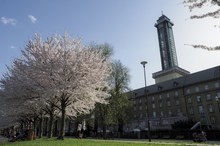 Ostrava’s Mayor Tomáš Macura welcomed the new rating: “Although the rating is not the primary purpose of our financial management, it is rewarding to see that Moody’s recognizes our consistent efforts to run the City’s finances as efficiently, transparently and prudently as possible. The rating also reflects Ostrava’s growing economic potential and status as a major regional centre. Our rating has been raised three times in a period of just three years – and that is an exceptional achievement.”
Ostrava’s Mayor Tomáš Macura welcomed the new rating: “Although the rating is not the primary purpose of our financial management, it is rewarding to see that Moody’s recognizes our consistent efforts to run the City’s finances as efficiently, transparently and prudently as possible. The rating also reflects Ostrava’s growing economic potential and status as a major regional centre. Our rating has been raised three times in a period of just three years – and that is an exceptional achievement.”
City approves the announcement of an international architectural competition for a new concert hall
The architectural competition for the new concert hall will be the fifth architectural competition announced by the City of Ostrava in the past two years – and it will be by far the biggest project of them all. In fact, it will be the biggest public building in Ostrava since the New City Hall – one of the city’s most distinctive and iconic landmarks – was completed in 1930. The City is keen to ensure that the new concert hall features outstanding architecture and unrivalled acoustics. The competition will consist of two separate stages. The estimated cost of the new concert hall is around 1.5 billion CZK (excluding VAT).
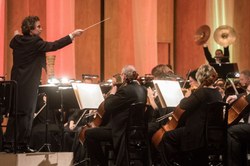 For decades Ostrava has been aware of the need for a dedicated concert hall offering top-class acoustics and excellent facilities for both audiences and musicians – and providing a worthy home for the city’s Janáček Philharmonic Orchestra. The site of the new concert hall will be the City of Ostrava Cultural Centre (Dům kultury města Ostravy) on 28. října Street, to the west of the city centre. The current cultural centre was built between 1956 and 1961 in a modern Classicist style, but for many years now it has struggled to fulfil its intended role as a hub for Ostrava’s cultural life. The new concert hall will be built next to the current cultural centre, which will also undergo a complete reconstruction as part of the project – giving Ostrava a new, fully revitalized cultural complex.
For decades Ostrava has been aware of the need for a dedicated concert hall offering top-class acoustics and excellent facilities for both audiences and musicians – and providing a worthy home for the city’s Janáček Philharmonic Orchestra. The site of the new concert hall will be the City of Ostrava Cultural Centre (Dům kultury města Ostravy) on 28. října Street, to the west of the city centre. The current cultural centre was built between 1956 and 1961 in a modern Classicist style, but for many years now it has struggled to fulfil its intended role as a hub for Ostrava’s cultural life. The new concert hall will be built next to the current cultural centre, which will also undergo a complete reconstruction as part of the project – giving Ostrava a new, fully revitalized cultural complex.
Ostrava’s Mayor Tomáš Macura gave more details: “Our aim is to build a high-quality concert hall with seats for around 1300 people, which will be unique in the Czech Republic. We have conducted a detailed study of how architectural competitions for similar cultural facilities are organized in other Czech cities and neighbouring countries. We have reached the conclusion that if we are to achieve a genuinely high-quality result, it is essential to involve project teams including not only outstanding architects (with experience of designing concert halls), but also experts in acoustics. To ensure that the competition generates the best possible design solution, we have decided to invite the participation of three internationally renowned architectural studios which have already designed concert halls with excellent acoustic parameters. These studios are Steven Holl Architects + Kropac Architects, Konior Studio, and Henning Larsen.”
Besides the three invited studios listed above, the competition will also be open to other entrants. As required by public procurement legislation, the competition jury will assess the documentation and portfolios submitted by applicants (potential entrants) to ensure that they meet the competition criteria – i.e. that they can demonstrate previous experience with similar types of buildings; the jury will also take into consideration the membership of the proposed project team (which must include experts with previous experience in this field). Applicants that meet the competition criteria will be invited to submit competition entries (proposals). There is no limitation on the number of other entrants that can participate in the competition in addition to the three invited studios. In the first stage of the competition itself, the jury will evaluate the submitted proposals to create a shortlist, selecting a maximum of six proposals to progress to the second stage, in which the proposals will be elaborated in more detail. The concert hall project is highly complex and challenging, so the division of the competition into two separate stages will help to maximize efficiency and ensure that the very best results are achieved. The terms and conditions of the competition have not yet been finalized; they may still be altered after discussions between the competition jury and the Czech Chamber of Architects.
Mayor Tomáš Macura outlined the schedule: “Obviously in the case of such a hugely important competition, quality (and not speed) is our key priority. Organizing a competition of this size places considerable demands on the organizers’ time. At the moment we expect to announce the competition in June this year; the winners will be selected at the beginning of next year, and I would expect us to be able to start construction work in 2021 or 2022. I would also like to mention that in 2017 we created a special fund which will be used to finance the concert hall project, and we are constantly adding money to the fund. At present the fund contains 100 million CZK – a sum that is completely ring-fenced for the concert hall project. We also expect financial participation from the Region and the state budget.”
The City Council has also approved the membership of the competition jury. The “dependent” members of the jury – i.e. representatives of local government authorities – will be Ostrava’s Mayor Tomáš Macura, Deputy Mayor Zbyněk Pražák, and the Mayor of Ostrava’s central municipal district (Moravská Ostrava a Přívoz) Petra Bernfeldová. The “independent” members – i.e. those with no connection to public authorities – will all be architects: Zvi Hecker (Berlin), Krzysztof Ingarden (Krakow), Rafi Segal (Princeton), and Valerie Mulvin (Dublin). The Council also approved the invited experts: the Director of the Ostrava branch of the National Heritage Institute (NPÚ) Michal Zezula, the Institute’s art historian Martin Strakoš, budget specialist Jindřich Jansa, the Head of the Office of the Head Architect at Ostrava City Authority Cyril Vltavský, the Director of the Janáček Philharmonic Orchestra Jan Žemla, acoustics expert Martin Vondrášek, and audio systems expert Jan Košulič.
The competition will be announced in June HERE
Architectural competition for a new apartment complex in the city centre attracts huge interest
In January, the City of Ostrava – in conjunction with the municipal district Moravská Ostrava a Přívoz – announced an architectural competition for a new apartment complex at the junction of Kostelní and Biskupská Streets in the historic city centre. The competition attracted huge interest among architectural studios, with 48 proposals submitted. The city council approved a winning proposal and four others to receive financial rewards. The winning design was made by the architect Michal Palascak of Brno and his co-authors.
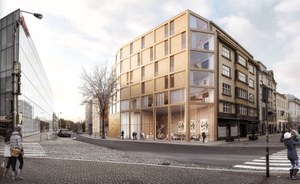 The competition has been assessed by the Czech Chamber of Architects, which has confirmed that it meets all applicable standards. The investor will be the municipal district Moravská Ostrava a Přívoz; the district did not have sufficient experience of organizing architectural competitions, so it approached the City Authority and asked for assistance.
The competition has been assessed by the Czech Chamber of Architects, which has confirmed that it meets all applicable standards. The investor will be the municipal district Moravská Ostrava a Přívoz; the district did not have sufficient experience of organizing architectural competitions, so it approached the City Authority and asked for assistance.
The competition proposals were submitted by foreign students from Spain (2x), Italy, Great Britain, the Netherlands, Poland, Germany and Slovakia (7x). The composition of the competition jury will be as follows: the “dependent” members of the jury – i.e. representatives of local government authorities – will be the Mayor of the municipal district Moravská Ostrava a Přívoz Petra Bernfeldová, the Deputy Mayor of the municipal district Dalibor Mouka, and the Head of the Office of the Head Architect at Ostrava City Authority Cyril Vltavský. The “independent” members – i.e. those with no connection to public authorities – will all be architects: Tadeáš Goryczka (Ostrava), Adam Horák (Brno), Tomáš Oth (Brno), and Jakub Szczęsny (Warsaw).
The jury awarded by a financial prize the STOPRO studio of architect Petr Stojanov's, PLATFORMA Architects and 53 architects with architect Petr Bořecký, and architect Martin Cviček.
 The project for the new apartment complex at the Biskupská / Kostelní St. junction is part of the local authorities’ efforts to revitalize Ostrava’s historic city centre; one of the key goals is to increase the number of permanent residents in the centre. The City of Ostrava and the municipal district Moravská Ostrava a Přívoz are working on several separate projects (currently in various phases) for new apartment complexes or reconstructions of existing residential blocks; when complete, these projects should provide around 200 extra apartments in the city centre.
The project for the new apartment complex at the Biskupská / Kostelní St. junction is part of the local authorities’ efforts to revitalize Ostrava’s historic city centre; one of the key goals is to increase the number of permanent residents in the centre. The City of Ostrava and the municipal district Moravská Ostrava a Přívoz are working on several separate projects (currently in various phases) for new apartment complexes or reconstructions of existing residential blocks; when complete, these projects should provide around 200 extra apartments in the city centre.
OstraVirus – Ostrava researchers have discovered a new virus
Scientists from the Ostrava University were very surprised, when researching biodiversity. They found a virus among their samples which nobody had seen before. Biologists from the laboratory, which is involved, among other, in the treatment of Leishmaniasis, have given it a symbolic name: OstraVirus. The city of the discovery becomes now famous around the world. However, the only common feature of Ostrava and the virus is the name and the fact that it has been found by the researchers from the Ostrava University
“It does not remind us of any other virus on the planet Earth. It is so different that we had to use special mathematical methods to confirm its virus nature. So far, we cannot say if this is just a new species, tribe or a genus. However, we are certain that nobody has seen it before and that is a great discovery which does not happen in life of researchers very often,” said the laboratory manager Vyacheslav Yurchenko.
The story of OstraVirus is interesting also because the researchers have basically found it by chance.
“The original plan did not count on finding a new virus. It was much broader biodiversity research which was supposed to give us an insight beyond the current knowledge, to uncover hidden facts outside the known. We worked on the project for four years and the discovery of OstraVirus has become the unexpected peak,” said Yurchenko.
His enthusiasm and excitement are shared by researchers across all continents. The article about OstraVirus was published in one of the most prestigious multi-disciplinary scientific journals in the world: Proceedings of the National Academy of Sciences of the United States of America. Yurchenko and his team see in that a big opportunity to present not only this partial success but also Ostrava and the top science which takes place in this area of biology.
The online journal by the Ostrava University has published in the past the interview with this researcher, who tries to find alternative possibilities how to treat and vaccinate Leishmaniasis – the disorder which, as he says, is not lucrative for pharmaceutical companies because only people in Asia and Africa suffer of it. And it is the second biggest killer disease of its kind, while Malaria takes the first place. His team works on the development of the so-called “self-destructive Leishmaniasis alternative” which could become the vaccination chance against Leishmaniasis. You can learn more about this researcher, originally from Ukraine, and his profile here.
Yurchenko regularly cooperates during his projects with experts countrywide and from the world. In the case of OstraVirus, there were also researchers from the Institute of Parasitology in České Budějovice, Charles University, CEITEC in Brno, and also researchers from the United States, Switzerland, Brasilia, Lithuania, and Russia.
BROSE has opened a new IT centre at the Moravian-Silesian Innovation Centre
Brose CZ specializes in mechatronic systems for the automotive industry, supplying many of the world’s leading car brands. On Friday 6 April the company opened a brand-new IT services centre in Ostrava. The centre is located at the Moravian-Silesian Innovation Centre (MSIC) in Ostrava-Poruba, and it will provide IT support for Brose’s entire global operations. The new centre will create jobs for around 50 IT specialists – mainly IT infrastructure experts, software engineers and app developers, as well as systems support and user support specialists.
Brose CZ executive Niclas Pfüller explained why the company chose the Moravian-Silesian Innovation Centre (MSIC) for its new facility: “The location of the MSIC right next to the Technical University campus represents a great opportunity for us – it puts us in direct contact with students and graduates, opening up the possibility of various forms of cooperation.”
BROSE began its history as a German family firm. In addition to its new Ostrava facility, it also has factories in Kopřivnice and Vsetín. The company specializes in mechatronic systems for car doors and car seats. It also develops and produces electric motors, drive systems and electronic systems for various automotive assemblies: steering, brakes, transmission, and engine cooling systems. BROSE employs around 3400 people in the Czech Republic, making it the company’s largest operation anywhere. Last year the company achieved a turnover of 20.7 billion CZK.
New workshop "Fajna dílna" supports craft skills
On 16 March a new extension to the craft workshop centre ‘Fajna Dílna’ was opened at Ostrava’s Lower Vítkovice complex. Guests at the opening ceremony included Ostrava’s Mayor Tomáš Macura and Deputy Mayor Iveta Vozňáková. Two new workshops (for carpentry and metalwork) have been added to the existing trio (pottery, sewing, Arduino). All five workshops – located in the historic former compressor hall of the Hlubina coal mine – are open to the public seven days a week from 9:00 to 18:00.
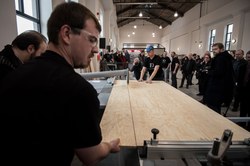 The newly opened carpentry workshop is equipped with professional machinery and tools for woodworking, while the metalwork shop has a full range of equipment for amateur enthusiasts and professional metalworkers. The other three workshops were opened in August 2017. The pottery workshop has two potter’s wheels, a kiln and equipment for clay preparation. The Arduino workshop has two 3D printers, plus a computer with software for graphic design and pre-print preparation. Users can also borrow several Arduino kits – an increasingly popular open electronic platform enabling the creation of interactive objects and digital devices.
The newly opened carpentry workshop is equipped with professional machinery and tools for woodworking, while the metalwork shop has a full range of equipment for amateur enthusiasts and professional metalworkers. The other three workshops were opened in August 2017. The pottery workshop has two potter’s wheels, a kiln and equipment for clay preparation. The Arduino workshop has two 3D printers, plus a computer with software for graphic design and pre-print preparation. Users can also borrow several Arduino kits – an increasingly popular open electronic platform enabling the creation of interactive objects and digital devices.
The ‘Fajna Dílna’ centre also runs a range of training courses – including sewing workshops. Currently in the pipeline are new workshops teaching people how to build their own bed or create security systems. One of the centre’s key priorities is to cooperate closely with secondary schools in order to encourage talented young craftspeople to become professionals in their chosen craft. The centre also plans to cooperate with designers on projects to create craft items such as wooden toys, as well as making items for the nearby Ostrava Science and Technology Centre and items of street furniture.
Cluster Day in the Moravian-Silesian Region
The National Cluster Association – working in conjunction with the Moravian-Silesian Innovation Centre (MSIC) and the Moravian-Silesian Regional Chamber of Commerce – is organizing an event called the MORAVIAN-SILESIAN REGION CLUSTER DAY, which will take place on Wednesday 9 May.
The patrons of the event will be the Mayor of Ostrava and the President of the Moravian-Silesian Region, and the Cluster Day will be held at the Regional Authority offices (Krajský úřad) in Ostrava. The Cluster Day will showcase the results of successful collaboration between businesses, universities and research institutions as part of cluster organizations in the Moravian-Silesian Region and beyond. You can look forward to presentations of interesting projects and talks by cluster experts. For more information on the event programme, and to register your attendance, see HERE
Bikesharing in Ostrava
 The City of Ostrava is encouraging citizens to become personally involved in helping to improve the environment, raising awareness of how each of us can play our own individual role. One of the ways in which Ostrava’s citizens can actively contribute to a reduction in emissions – while also benefiting their own health and fitness – is by cycling rather than using motor vehicles. To ensure that everybody has access to bicycles, the City has joined forces with the Rekola company to launch a bikesharing project. As part of the project, 180 bikes will be available to borrow from (and return to) 39 bike stations located at various points in the central part of Ostrava.
The City of Ostrava is encouraging citizens to become personally involved in helping to improve the environment, raising awareness of how each of us can play our own individual role. One of the ways in which Ostrava’s citizens can actively contribute to a reduction in emissions – while also benefiting their own health and fitness – is by cycling rather than using motor vehicles. To ensure that everybody has access to bicycles, the City has joined forces with the Rekola company to launch a bikesharing project. As part of the project, 180 bikes will be available to borrow from (and return to) 39 bike stations located at various points in the central part of Ostrava.
Ostrava’s Mayor Tomáš Macura explained the importance of the scheme: “Bikesharing enables us to offer citizens and visitors a modern, eco-friendly form of transport. It will have a positive impact not only on the health of its users (cyclists), but also on quality of life for all Ostrava’s citizens: cycling is a zero-emissions, low-noise form of transport, and it will help to reduce car use and improve traffic flow within the city centre. And what’s more, cycling is more than just a form of transport – it’s a lifestyle.”
The bikesharing scheme will operate from 1 May to the winter. The precise locations of the bike stations can be found on this map.
Ostrava’s citizens can also get involved in a national competition called Bike to Work, which is being organized by the Auto*Mat association and will last throughout May 2018. This annual nationwide event is being held for the eighth time. Its aim is to motivate as many people as possible to use cycling – or other non-motorized forms of transport, including walking or running – when commuting to work. If people stop using cars every day, they will soon feel a number of benefits. They will improve their physical fitness (and their mood), and they will also contribute to improvements in air quality – all helping to make the city a safer, more pleasant place to live and work. This year the City of Ostrava is involved in the competition for the first time, in the role of local coordinating partner. Participants can register up to 30 April 2018 – so don’t delay, get pedalling today! Ostrava strongly supports cycling, and the city has an extensive network of cycle routes (around 250 km in total).
“It does not remind us of any other virus on the planet Earth. It is so different that we had to use special mathematical methods to confirm its virus nature. So far, we cannot say if this is just a new species, tribe or a genus. However, we are certain that nobody has seen it before and that is a great discovery which does not happen in life of researchers very often,” said the laboratory manager Vyacheslav Yurchenko.
The story of OstraVirus is interesting also because the researchers have basically found it by chance.
“The original plan did not count on finding a new virus. It was much broader biodiversity research which was supposed to give us an insight beyond the current knowledge, to uncover hidden facts outside the known. We worked on the project for four years and the discovery of OstraVirus has become the unexpected peak,” said Yurchenko.
His enthusiasm and excitement are shared by researchers across all continents. The article about OstraVirus was published in one of the most prestigious multi-disciplinary scientific journals in the world: Proceedings of the National Academy of Sciences of the United States of America. Yurchenko and his team see in that a big opportunity to present not only this partial success but also Ostrava and the top science which takes place in this area of biology.
The online journal by the Ostrava University has published in the past the interview with this researcher, who tries to find alternative possibilities how to treat and vaccinate Leishmaniasis – the disorder which, as he says, is not lucrative for pharmaceutical companies because only people in Asia and Africa suffer of it. And it is the second biggest killer disease of its kind, while Malaria takes the first place. His team works on the development of the so-called “self-destructive Leishmaniasis alternative” which could become the vaccination chance against Leishmaniasis. You can learn more about this researcher, originally from Ukraine, and his profile here.
Yurchenko regularly cooperates during his projects with experts countrywide and from the world. In the case of OstraVirus, there were also researchers from the Institute of Parasitology in České Budějovice, Charles University, CEITEC in Brno, and also researchers from the United States, Switzerland, Brasilia, Lithuania, and Russia.
Brose CZ executive Niclas Pfüller explained why the company chose the Moravian-Silesian Innovation Centre (MSIC) for its new facility: “The location of the MSIC right next to the Technical University campus represents a great opportunity for us – it puts us in direct contact with students and graduates, opening up the possibility of various forms of cooperation.”




